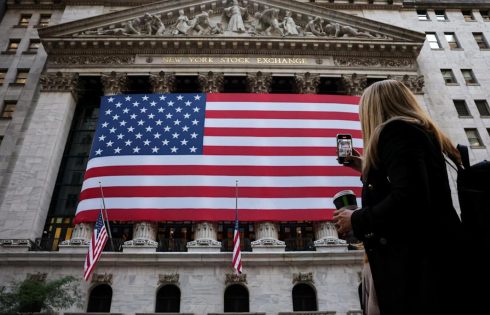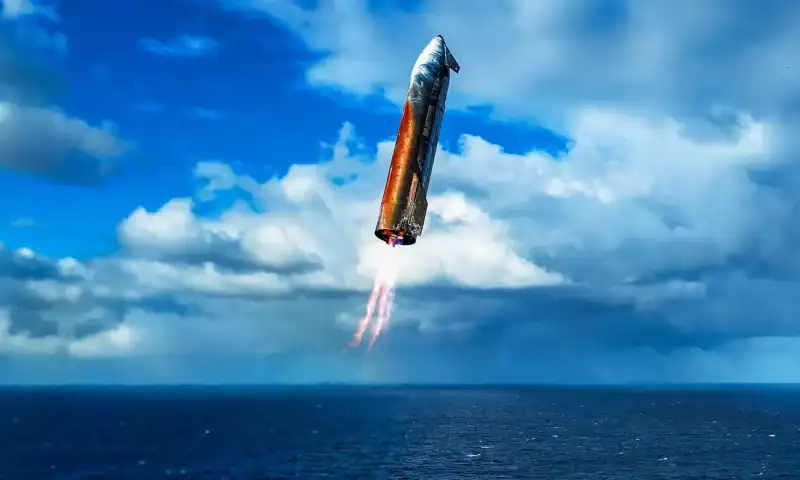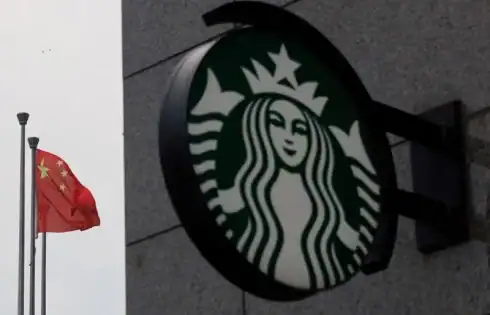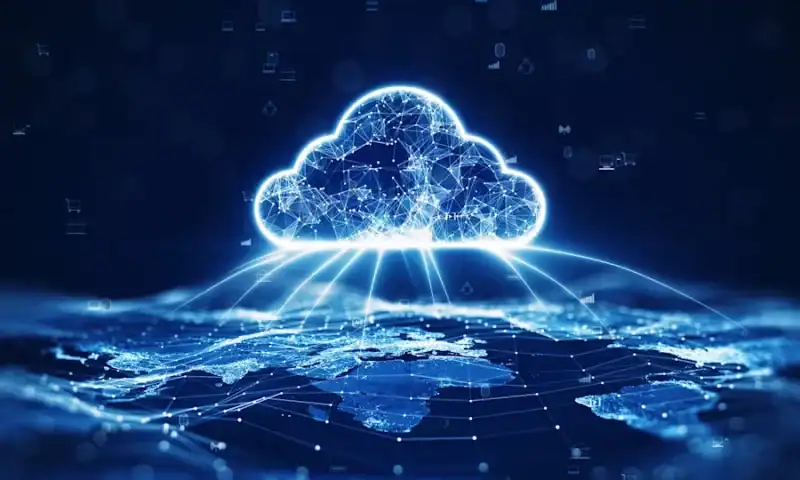
Rightly or wrongly, Amazon (NASDAQ: AMZN) has been viewed as something of a laggard in artificial intelligence (AI) among big tech companies since the launch of ChatGPT.
Microsoft, which started investing in OpenAI in 2019, helped engineer the transformative moment when ChatGPT debuted, and Alphabet had been waiting for it with its own large language model (LLM) ready to go. Even Meta Platforms unveiled its own LLM and chat platform, Meta AI, shortly after.
Amazon, on the other hand, seemed unprepared for the shift to AI. The company has since launched Amazon Bedrock, a managed service on Amazon Web Services (AWS) that provides access to AI models.
It has also launched its own LLM, Nova, which has received much less attention than LLMs from its peers. And it has built AI chips for training (called Trainium) and inference (Inferentia).
However, Amazon’s cloud growth has also lagged behind both Microsoft and Alphabet in recent years, which seems to be another sign that those two companies are outperforming it in AI.
Amazon’s most consequential move in AI may have been investing $8 billion in Anthropic and forming a strategic partnership with the AI start-up behind the Claude chatbot. And that move looks even smarter after Anthropic’s valuation ballooned to $183 billion.
Anthropic strikes gold
In a funding round that closed on Tuesday, Anthropic’s valuation tripled to $183 billion, just six months after a funding round that valued the company at $61.5 billion.
Anthropic raised $13 billion in a round led by Iconiq Capital, making it clear that it’s the closest challenger to OpenAI, which is now in talks for a valuation as high as $500 billion.
The surge in Anthropic’s valuation could also be a big win for Amazon because Anthropic is likely to spend at least some of that $13 billion on AI infrastructure supplied by AWS. It’s even set to be the primary user of a new Amazon data center in Indiana.
According to analyst research, Anthropic could spend as much as $5 billion on AWS next year, and that number could grow if it receives more funding, or if its exceptional growth rate continues, since the company said that its run-rate revenue improved from $1 billion at the beginning of the year to $5 billion by August 2025, implying an annual growth rate of roughly 700%. Anthropic has differentiated itself from OpenAI with a focus on “safe” AI, and Claude is differentiated from ChatGPT in a number of meaningful ways.
It has also committed to using Amazon’s Trainium and Inferentia chips, creating a market for those products that could help it build momentum. The tripling in Anthropic’s valuation also makes Amazon’s stake in the company that much more valuable.
Amazon’s AI future
For Amazon, the Anthropic funding round is more than a win for the company. It also offers evidence that it’s still early in the AI boom, since a tripling in valuation in six months shows that investors are eager to throw money at the new technology; and given the partnership between the two companies, a win for Anthropic is a win for Amazon.
While Amazon may have gotten a slow start in AI, it’s still the largest cloud infrastructure platform in the world, and it has other outlets for AI, including its e-commerce business, its logistics network, and an advertising business that will help it benefit from the technology.
It’s still early days for AI, and there’s plenty of room for Amazon to make gains, especially when its close partner is flush with a $13 billion infusion. Its bet on Anthropic is already paying off in more ways than one, and that partnership should help it grab other AI spending at AWS.




 WASHINGTON — SpaceX Chief Executive Elon Musk says he is confident that Starship can start delivering 100 tons of payload to orbit next year while reusing both stages.
In an interview during the All-In Summit Sept. 9, Musk said he expected an upgraded version of the vehicle, known as version 3, to start flying next year, with both the Super Heavy booster and Starship upper stage recovered and reused.
“Unless we have some very major setbacks, SpaceX will demonstrate full reusability next year, catching both the booster and the ship, and being able to deliver over 100 tons to a useful orbit,” he said.
That performance is essential for SpaceX, allowing it to both place larger next-generation Starlink satellites into orbit and support the lunar lander version of Starship the company is developing for NASA’s Artemis lunar exploration campaign.
Version 3 of Starship will be a “gigantic upgrade” from the current version 2, he said, including the use of third-generation Raptor engines. “Pretty much everything changes on the rocket with version 3.”
He cautioned that the upgraded rocket “might have some initial teething pains because it’s such a radical redesign.” The current version 2 vehicle suffered three consecutive mission-ending failures in test flights earlier this year before a largely successful Flight 10 mission Aug. 26.
Musk confirmed there is one remaining launch of version 2 of Starship, planned for later this year, before switching to version 3. He didn’t offer an estimate of when the first version 3 launch would take place.
At the American Astronautical Society’s Glenn Space Technology Symposium Sept. 8, Bill Gerstenmaier, vice president of build and flight reliability at SpaceX, said that final version 2 launch will, like the previous flights, be a suborbital mission. “We’re going to try and understand how the ship flies,” he said.
He said he expected the first launch of Starship version 3 would also be suborbital. “If that’s successful, then we’ll probably go orbital after that with the next v3.”
WASHINGTON — SpaceX Chief Executive Elon Musk says he is confident that Starship can start delivering 100 tons of payload to orbit next year while reusing both stages.
In an interview during the All-In Summit Sept. 9, Musk said he expected an upgraded version of the vehicle, known as version 3, to start flying next year, with both the Super Heavy booster and Starship upper stage recovered and reused.
“Unless we have some very major setbacks, SpaceX will demonstrate full reusability next year, catching both the booster and the ship, and being able to deliver over 100 tons to a useful orbit,” he said.
That performance is essential for SpaceX, allowing it to both place larger next-generation Starlink satellites into orbit and support the lunar lander version of Starship the company is developing for NASA’s Artemis lunar exploration campaign.
Version 3 of Starship will be a “gigantic upgrade” from the current version 2, he said, including the use of third-generation Raptor engines. “Pretty much everything changes on the rocket with version 3.”
He cautioned that the upgraded rocket “might have some initial teething pains because it’s such a radical redesign.” The current version 2 vehicle suffered three consecutive mission-ending failures in test flights earlier this year before a largely successful Flight 10 mission Aug. 26.
Musk confirmed there is one remaining launch of version 2 of Starship, planned for later this year, before switching to version 3. He didn’t offer an estimate of when the first version 3 launch would take place.
At the American Astronautical Society’s Glenn Space Technology Symposium Sept. 8, Bill Gerstenmaier, vice president of build and flight reliability at SpaceX, said that final version 2 launch will, like the previous flights, be a suborbital mission. “We’re going to try and understand how the ship flies,” he said.
He said he expected the first launch of Starship version 3 would also be suborbital. “If that’s successful, then we’ll probably go orbital after that with the next v3.”

 A new, high-resolution audio format has just launched on Spotify.
Spotify announced Lossless Listening on Wednesday, Sept. 10. The new feature allows users to stream music in 24-bit/44.1 kHz FLAC, the least compressed and highest resolution audio format. Simply put, the audio is richer-sounding than regular, standard audio.
Due to their high resolution, lossless audio files are large in size. For the time being, Spotify users should only listen to music at this quality with wired headphones or speakers on a non-Bluetooth connection, according to a Spotify news release. Bluetooth currently doesn’t provide enough bandwidth to transmit the file sizes of lossless audio.
Additionally, because the files are so large, users should be prepared for tracks to take a moment to play, rather than instantaneously, the news release states.
Here’s what to know about Spotify’s new feature.
A new, high-resolution audio format has just launched on Spotify.
Spotify announced Lossless Listening on Wednesday, Sept. 10. The new feature allows users to stream music in 24-bit/44.1 kHz FLAC, the least compressed and highest resolution audio format. Simply put, the audio is richer-sounding than regular, standard audio.
Due to their high resolution, lossless audio files are large in size. For the time being, Spotify users should only listen to music at this quality with wired headphones or speakers on a non-Bluetooth connection, according to a Spotify news release. Bluetooth currently doesn’t provide enough bandwidth to transmit the file sizes of lossless audio.
Additionally, because the files are so large, users should be prepared for tracks to take a moment to play, rather than instantaneously, the news release states.
Here’s what to know about Spotify’s new feature.



 Oracle (NYSE: ORCL) lit up after-hours trading on Sept. 9 after reporting a massive jump in its booked work tied to cloud infrastructure. The database giant turned cloud platform is benefiting directly from the artificial intelligence (AI) buildout, but in a way that provides unusually clear visibility into future revenue.
Nvidia (NASDAQ: NVDA) is still the face of AI infrastructure and continues to post eye-popping results. But the paths these two companies are on are different. Oracle’s growth is increasingly anchored by multiyear contracts that companies recognize as revenue over time, while Nvidia’s revenue depends on hardware shipments that ebb and flow with product transitions and customer ordering patterns. That’s why, from here, Oracle looks like the better buy.
Oracle (NYSE: ORCL) lit up after-hours trading on Sept. 9 after reporting a massive jump in its booked work tied to cloud infrastructure. The database giant turned cloud platform is benefiting directly from the artificial intelligence (AI) buildout, but in a way that provides unusually clear visibility into future revenue.
Nvidia (NASDAQ: NVDA) is still the face of AI infrastructure and continues to post eye-popping results. But the paths these two companies are on are different. Oracle’s growth is increasingly anchored by multiyear contracts that companies recognize as revenue over time, while Nvidia’s revenue depends on hardware shipments that ebb and flow with product transitions and customer ordering patterns. That’s why, from here, Oracle looks like the better buy.



 Fidelity has launched the Fidelity Digital Interest Token (FDIT), an on-chain money market fund backed by mostly U.S. Treasuries, mainly from Ondo Finance’s Short-Term U.S. Treasuries Fund (OUSG) as the only anchor and largest investor.
According to Ondo, OUSG makes up more than 99% of FDIT assets at this time.
The launch is yet another milestone in the continued efforts by major asset managers to tokenize traditional financial products.
Fidelity has launched the Fidelity Digital Interest Token (FDIT), an on-chain money market fund backed by mostly U.S. Treasuries, mainly from Ondo Finance’s Short-Term U.S. Treasuries Fund (OUSG) as the only anchor and largest investor.
According to Ondo, OUSG makes up more than 99% of FDIT assets at this time.
The launch is yet another milestone in the continued efforts by major asset managers to tokenize traditional financial products.






 Oil clawed back some of last week’s loss after OPEC+ agreed to raise production at a modest rate and against a backdrop of doubts about how many of its members can keep lifting output.
The hike marks the reversal of cuts that were set to remain in place until the end of 2026 —following the rapid return of a previous tranche of idled barrels over recent months — as the alliance seeks to reclaim market share. It signals the group has the confidence to push its bold oil market strategy a little bit further.
Brent climbed above $66 a barrel after losing almost 4% last week, when it became apparent that an output hike was on the way. Prices also pushed higher after Bloomberg News reported that the European Union is exploring new sanctions on Russian banks and energy companies as part of its latest measures to end the war in Ukraine, a move it’s hoping to coordinate with the US.
Oil clawed back some of last week’s loss after OPEC+ agreed to raise production at a modest rate and against a backdrop of doubts about how many of its members can keep lifting output.
The hike marks the reversal of cuts that were set to remain in place until the end of 2026 —following the rapid return of a previous tranche of idled barrels over recent months — as the alliance seeks to reclaim market share. It signals the group has the confidence to push its bold oil market strategy a little bit further.
Brent climbed above $66 a barrel after losing almost 4% last week, when it became apparent that an output hike was on the way. Prices also pushed higher after Bloomberg News reported that the European Union is exploring new sanctions on Russian banks and energy companies as part of its latest measures to end the war in Ukraine, a move it’s hoping to coordinate with the US.










